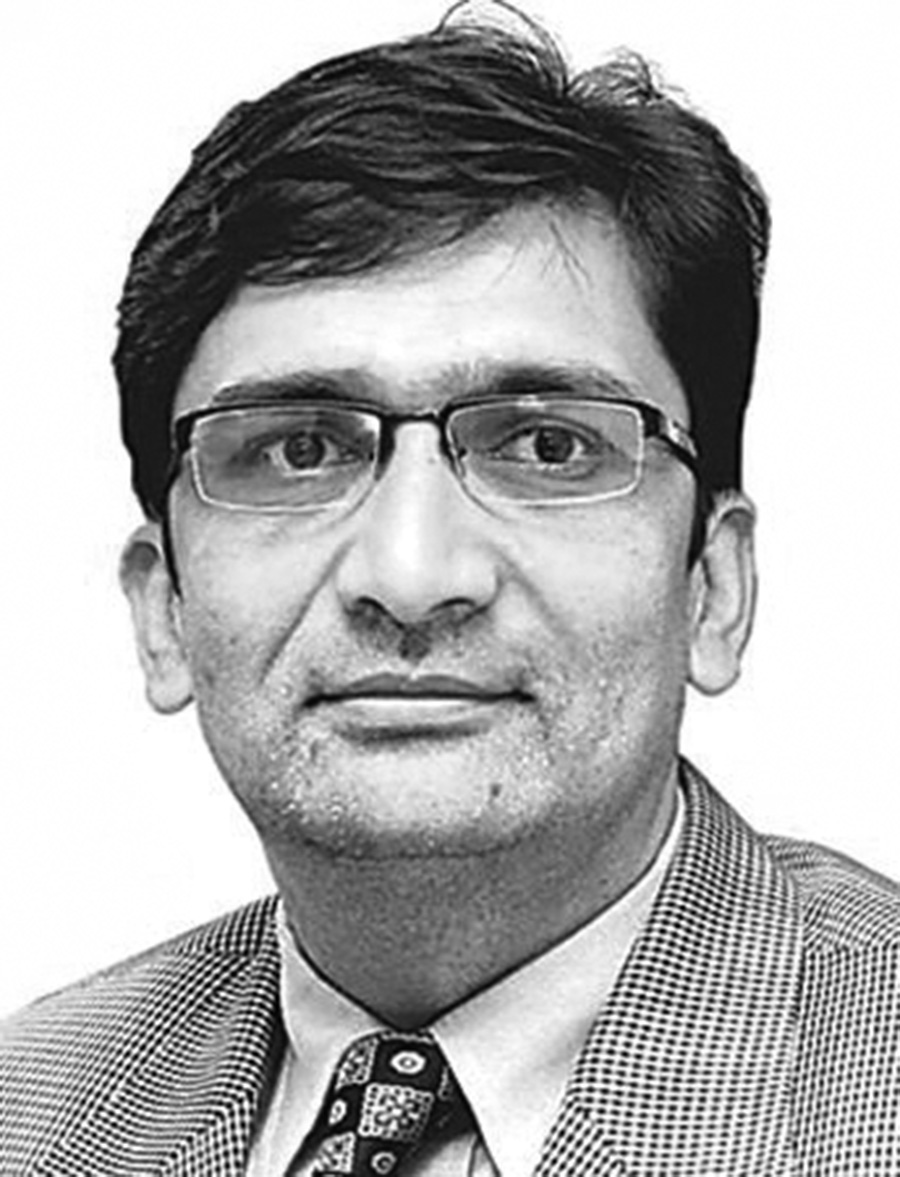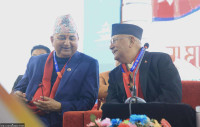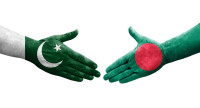Opinion
The post-truth socialism
CPN-UML President KP Sharma Oli’s recent rhapsody, “Democracy with Nepali characteristics for new Nepal” sounds like an unimaginative parody of Chinese President Xi Jinping’s fresh eponymy, “Socialism with Chinese characteristics for new era.” And it is not sheer coincidence.
Achyut Wagle
CPN-UML President KP Sharma Oli’s recent rhapsody, “Democracy with Nepali characteristics for new Nepal” sounds like an unimaginative parody of Chinese President Xi Jinping’s fresh eponymy, “Socialism with Chinese characteristics for new era.” And it is not sheer coincidence.
The Communist Manifesto, initiated by Karl Marx and Frederic Engels in 1848 is now 170 years old. The Bolshevik coup in Russia by Vladimir Lenin—the first successful field experiment of the Manifesto—celebrated its centenary this November. But the communist verbosity continues verbatim as if it were a fresh doctrine.
The joint manifesto by Nepal’s left alliance meant for adjacent parliamentary polls is the latest testimony to it. It demonstrates an undiminished penchant for ‘utopian communist socialism’, at least in Nepal.
The ‘socialism’ euphoria intends to take a swipe at all other forms of rational political thinking; our own post-truth phenomena.
Justifying rationale
American historian Stephen Kotkin, who has extensively published on Stalin and Mao, portrayed the 20th century as the communist century. According to him, over the last 100 years since the Bolshevik revolution, ‘communism has claimed at least 65 million human lives.’ Lenin and his successor Stalin’s modus operandi heavily featured mass deportation, forced labour camps and state-organised terrors, resulting in Orwell’s Animal Farm-like mass starvation and social disintegration.
Such acts were replicated by Mao in China, the Kim dynasty in North Korea, Pol Pot in Cambodia, the Castro brothers in Cuba, and Ceausescu in Romania among many other communist leaders of Europe and South America. Our own Pushpa Kamal Dahal and Baburam Bhattarai are partially accountable for the massacre of thousands of unarmed Nepalis. Such brutality would never justify political rationale.
The existence and continuity of such a despicable ideology over the ages is, therefore, indeed a miracle. No doubt dozens of these monolithic regimes have fallen, except in a few nations. North Korea and Cuba still remain fortified communist dictatorships.
The post-Chavez regime in Venezuela is rapidly losing its grip on power. China, and to some extent Vietnam, are carefully limiting their communist whips for political control only, leaving economic rights and freedom of markets largely uninfringed.
Their tagline of ‘socialism with market freedom’ has gone far. Nepali communists’ longing for such a redundant idea, even reversing the existing market freedom, is simply anachronistic, to say the least.
The manifesto of the left alliance has unequivocally criticised the trends of globalisation, privatisation and Nepal’s integration into the global market through foreign trade and foreign direct investment. It clearly has advocated for a state-controlled economy.
The alliance holds the Nepali Congress (NC) responsible for adopting these liberal economic policies during the past two and half decades, as the governments were often formed under the leadership of the NC. Beyond this, Oli has publicly said that parliamentary democracy is not the panacea to socio-economic progress of a nation. This certainly is an ominous signal.
Constant evolution
To view these developments in a historical context, Nepal’s evolution towards democracy looked rather promising only because major communist forces, one after another, adopted the adult franchise-based, multi-party democratic system.
From the 1990s onwards, CPN-UML not only transformed itself from a dogmatic communist force to a credible democratic alternative but also contemplated abandoning the communist tag several times.
CPN (Maoist Centre) too was thought to be following similar footsteps, albeit slowly. But, fairly recently, narratives, tones and the demeanour of influential leaders in those parties have tangibly taken a volte-face. This is a cause of true concern as it would decisively alter Nepal’s democratic future, once again.
There are two principal, contributing factors to such reversals: geopolitical and domestic. The CPN-UML-led alliance must have been highly enthused by the fact that Xi in China not only consolidated his power base, he also put forth his intentions of reverting to a Mao-style tight-fisted rule. It may once again justify the relevance of a single party dictatorship even in the mid-21st century.
Coincidentally, UML president Oli has been successful in cultivating a new form of engagement with the current Chinese leadership which he hopes will pay off in the long run. India’s blunders and its half-baked Nepal policies are also accelerating this process.
The ideological comfort that Nepali communists feel while dealing with China is natural. The second factor is a perceived potential strength of the united communist force if it doesn’t combust in the aftermath of the election results and works for a long
term as planned. Both Oli and Dahal hope to run a government in true communist fashion, perhaps akin to Xi, in the likely scenario of an emphatic electoral win by the left alliance.
Nepali electorates seem less concerned by these grave developments. A change of parties has given the impression that political ideologies and ideals have, for all practical purposes, become irrelevant. For those who barely go into a nuanced deciphering of the distinctness of messages of contesting political parties, all the poll-oriented agendas and commitments may appear the same. The platitudes all parties relating to ‘implementation of the constitution and orienting the economy to socialism’ may sound similar, however, they are not the same.
But socialism, for example, sways like the post-truth phenomena. The terms ‘socialism oriented’ mentioned in the constitution, the one professed by the communists under ‘people’s democracy’ or NC’s democratic socialism are not at all same. Let’s see the following extract from the Communist Manifesto, 1848: “...the communists will have to deal with democratic socialists, and in general to follow as far as possible a common policy with them—provided that these socialists do not enter into the service of the ruling bourgeoisie and attack the communists.”
This is directly comparable to what the left alliance election manifesto has said about the NC. But, the communists, according to the same document, are different socialists who work for the elimination of capitalism. Whereas, NC’s socialism is based on larger welfare regardless of the means involved. The term socialism in the constitution is yet unexplained. The post-truth needs rectification.
- Wagle, a founding editor of the economic daily Arthik Abhiyan, is an eco-political analyst




 7.12°C Kathmandu
7.12°C Kathmandu










